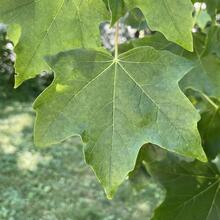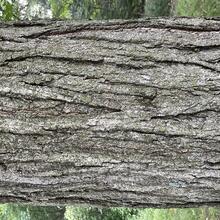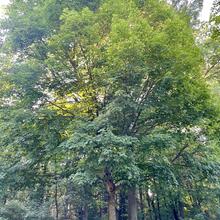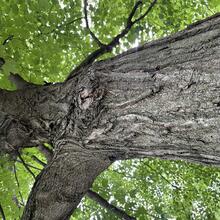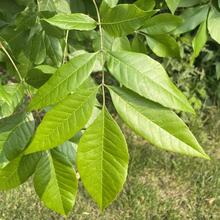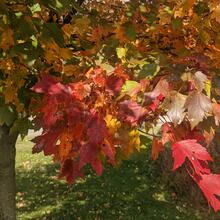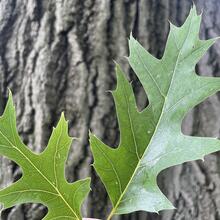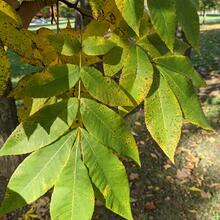Acer nigrum
Sapindaceae
Frequently hybridizes with sugar maple, considered by some to be a subspecies of sugar maple. Black maple typically has larger, drooping, 3-lobed leaves.
Summary
 Climate Tolerance
Climate Tolerance
Poor
Wildlife Benefits
Early source of nectar; moth/butterfly host; bat roosting site
Pollination Type
Wind
Plant Hardiness Zones
4 to 8
# Butterfly/Moths that use as host
273
Bloom Time
Spring (Apr-May)
 Shade/Sun Tolerance
Shade/Sun Tolerance
Part Shade to Shade: Receives less than 2 to 4 hours of direct sunlight or dappled shade all day
 Maximum Height
Maximum Height
Medium (40-75 ft)
 Growth Rate
Growth Rate
Moderate: 1 ft- 2 ft per year
 Soil Type
Soil Type
Clay: Small sized particles. Long moisture retention and low nutrient availability.
Loam: Equal mix of clay, sand, and silt. Moderate moisture retention and high nutrient availability.
Silt: Medium sized particles. Moderate moisture retention and high nutrient availability.
 Soil Moisture Tolerance
Soil Moisture Tolerance
Moist - Dry: Soil can be damp for periods of time and can retain little to no water for periods of time
Root - Fungal Association
Arbuscular mycorrhizae: Symbiotic relationship with fungi that exist on inside of plant root cells, facilitating nutrient uptake
Pest & Pathogen Risks
Low; Verticillium wilt
 Urban Stress Tolerance
Urban Stress Tolerance
High: Tree can adapt to a variety of urban conditions and will grow well
Drought Tolerance
Tolerant: Tree will not become stressed during periods of drought
Coefficient of Conservatism
5
Native Status
OH-Native: Species is native to Ohio
NatureServe G-rank
G5
Plant Community Type
- Beech Mixed: Frequent
- Oak Mixed: Occasional
- Alluvial: Occasional
- Red Maple Mixed: Occasional
- Ruderal: Rare
- Urban Tree Cover: Common
Bloom Color
Green
Yellow
Form
Tree
 Lifespan
Lifespan
Medium: 100-250 years
Soil pH
Acid-Neutral (pH 5.5-7.5)
Wetland Indicator Status
FACU: Facultative Upland, usually occurs in non-wetlands, but may occur in wetlands
Soil Compaction Tolerance
Tolerant: Tree will not become stressed from soil being compacted
Heat Tolerance
Tolerant: Tree will not become stressed for increased temperature due to urban heat island effects
Salt Tolerant
Sensitive: Intolerant to either aerial salt spray and/or salt present in soil
Native County Status
Cuyahoga
Geauga
Lake
Lorain
Medina
Portage
Summit
IUCN Red List Assessment
Least Concern
